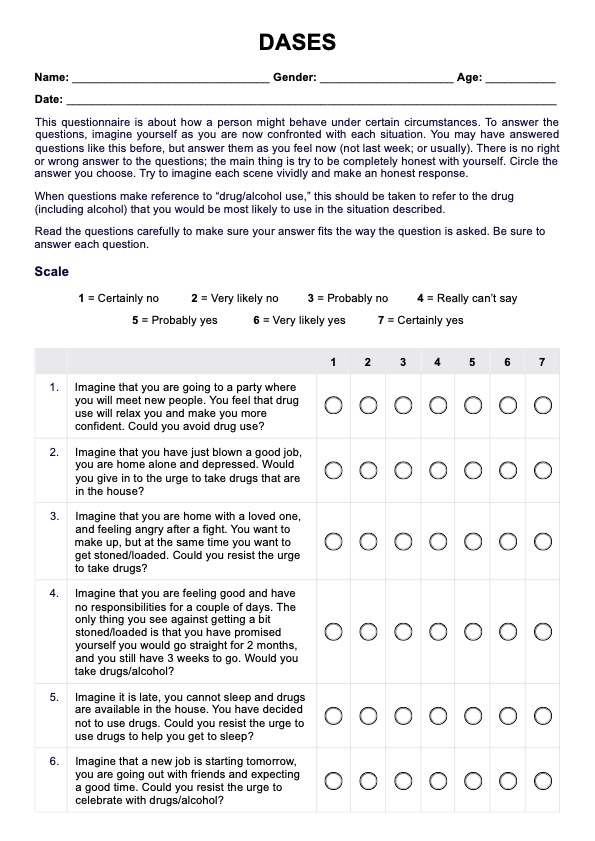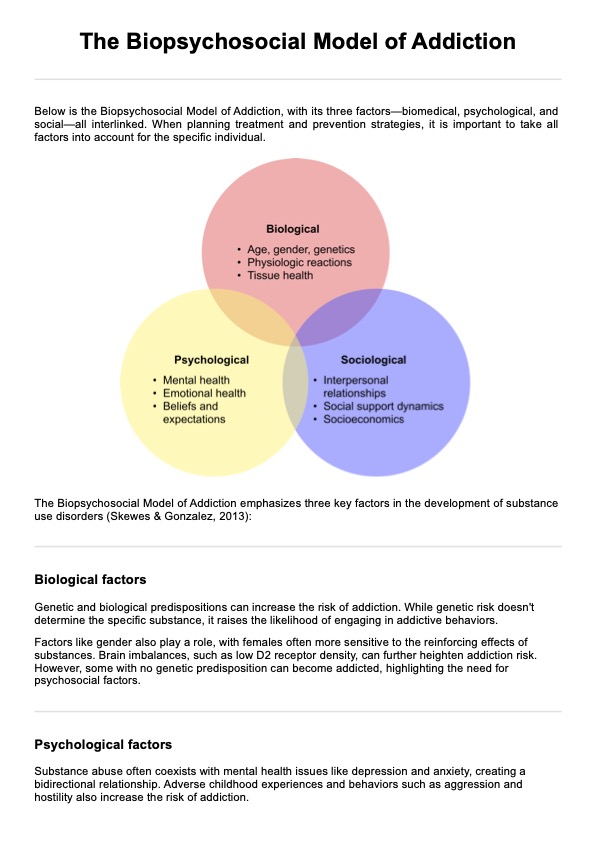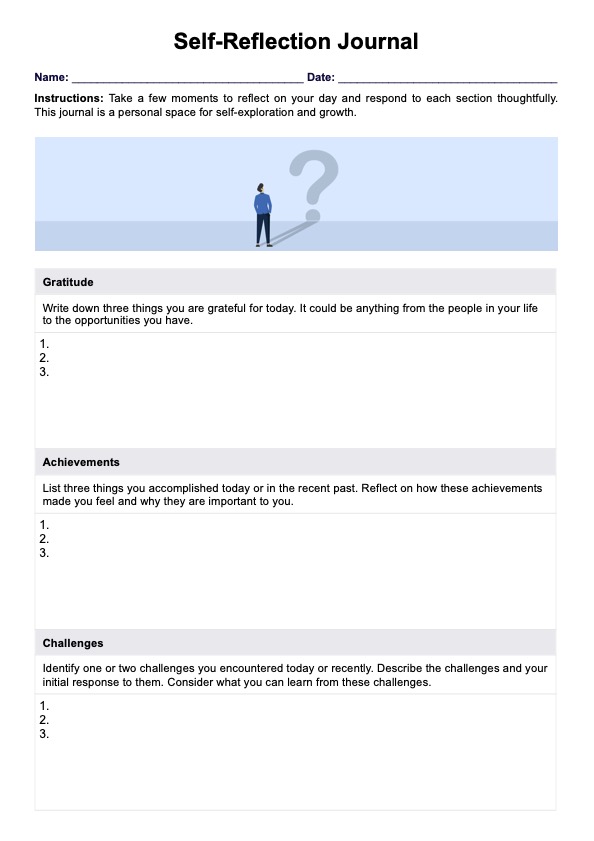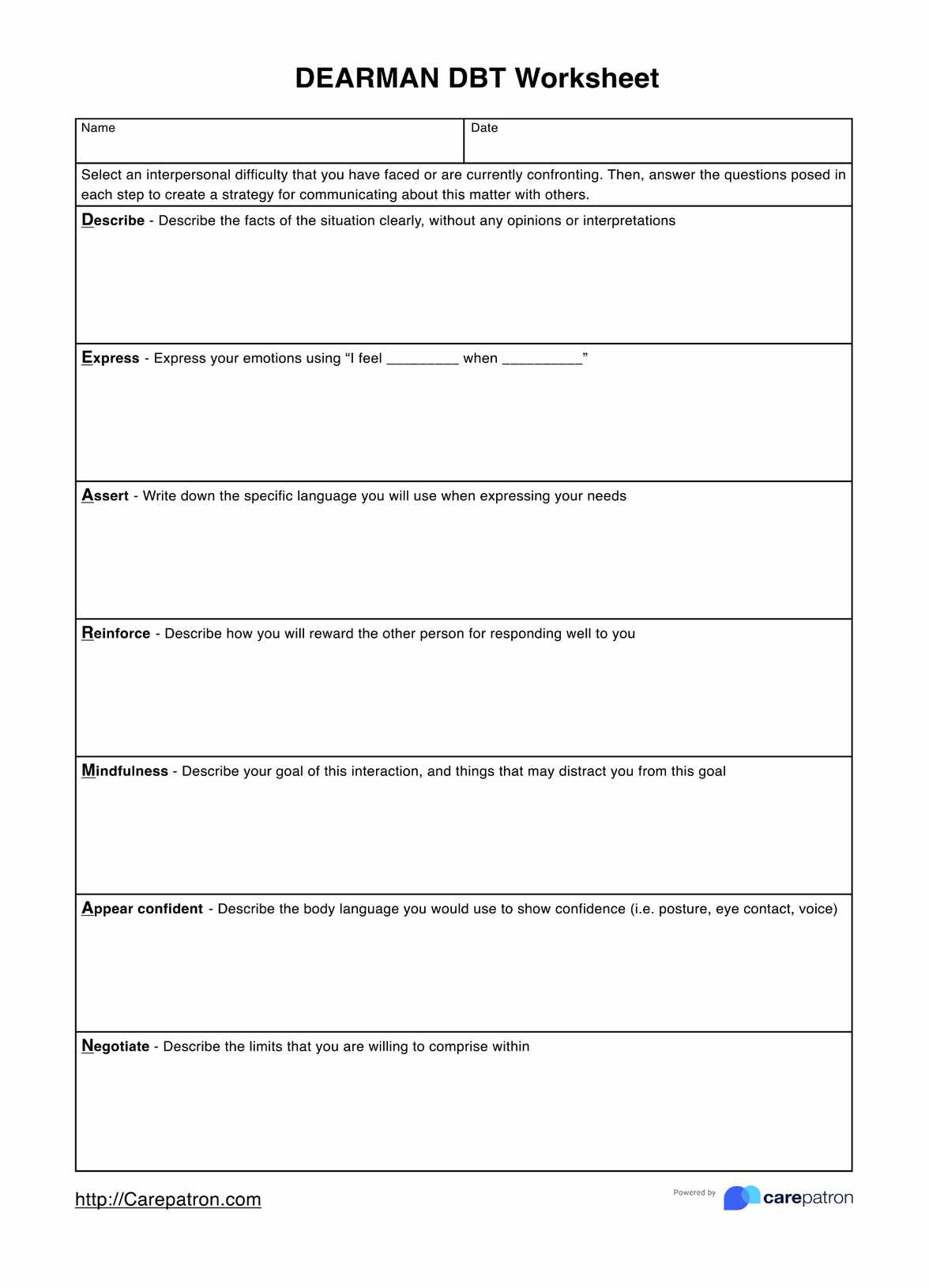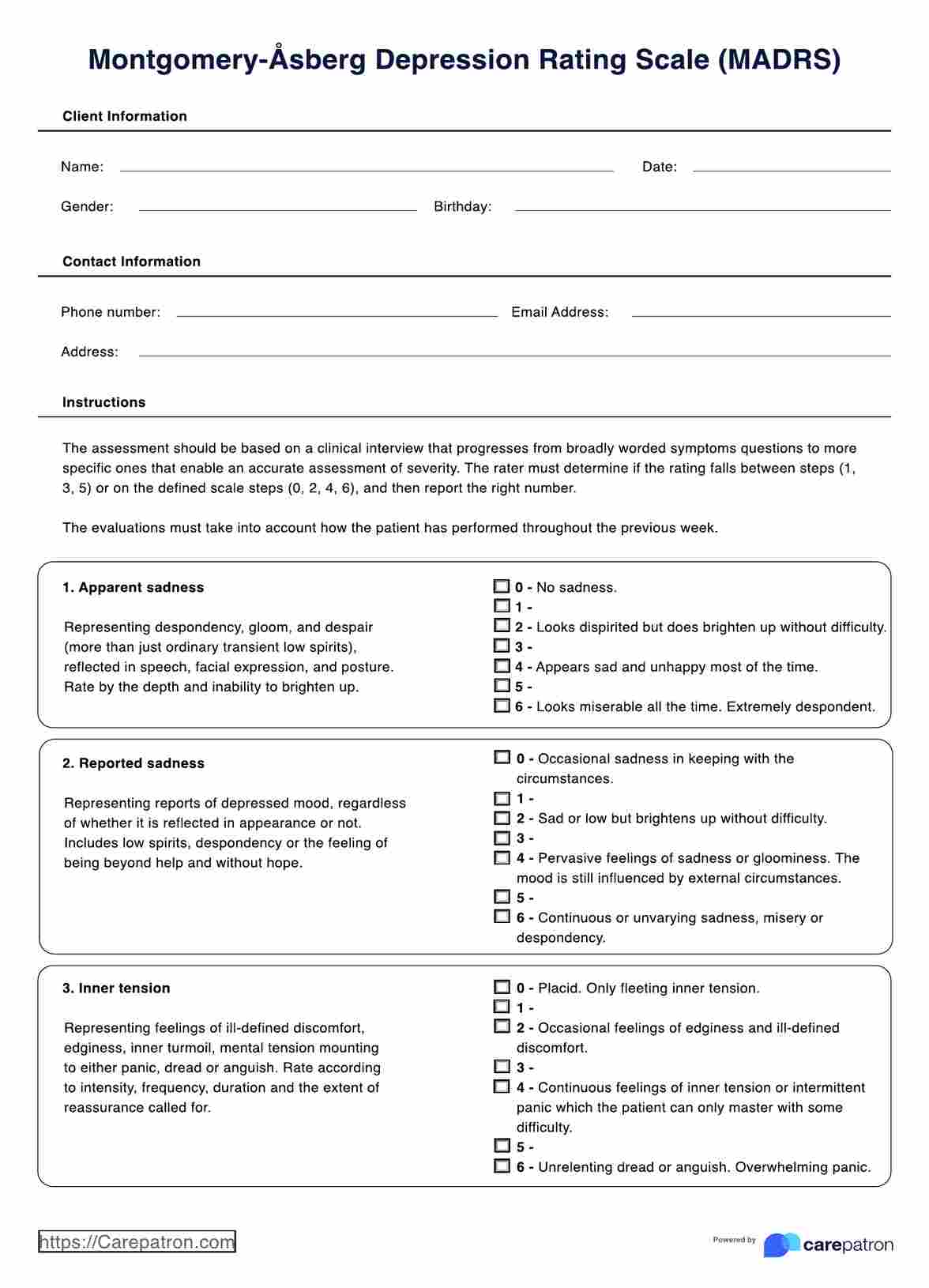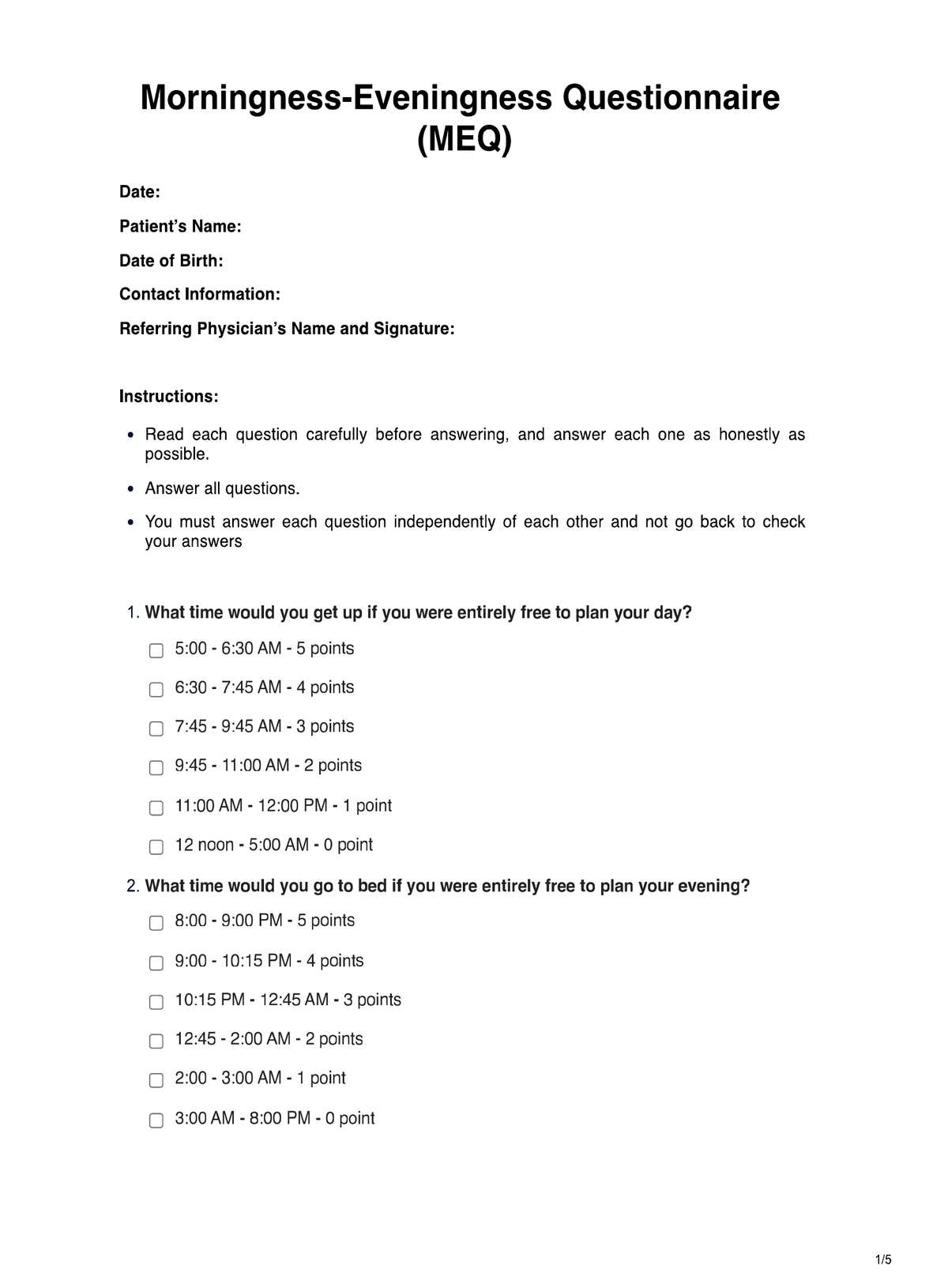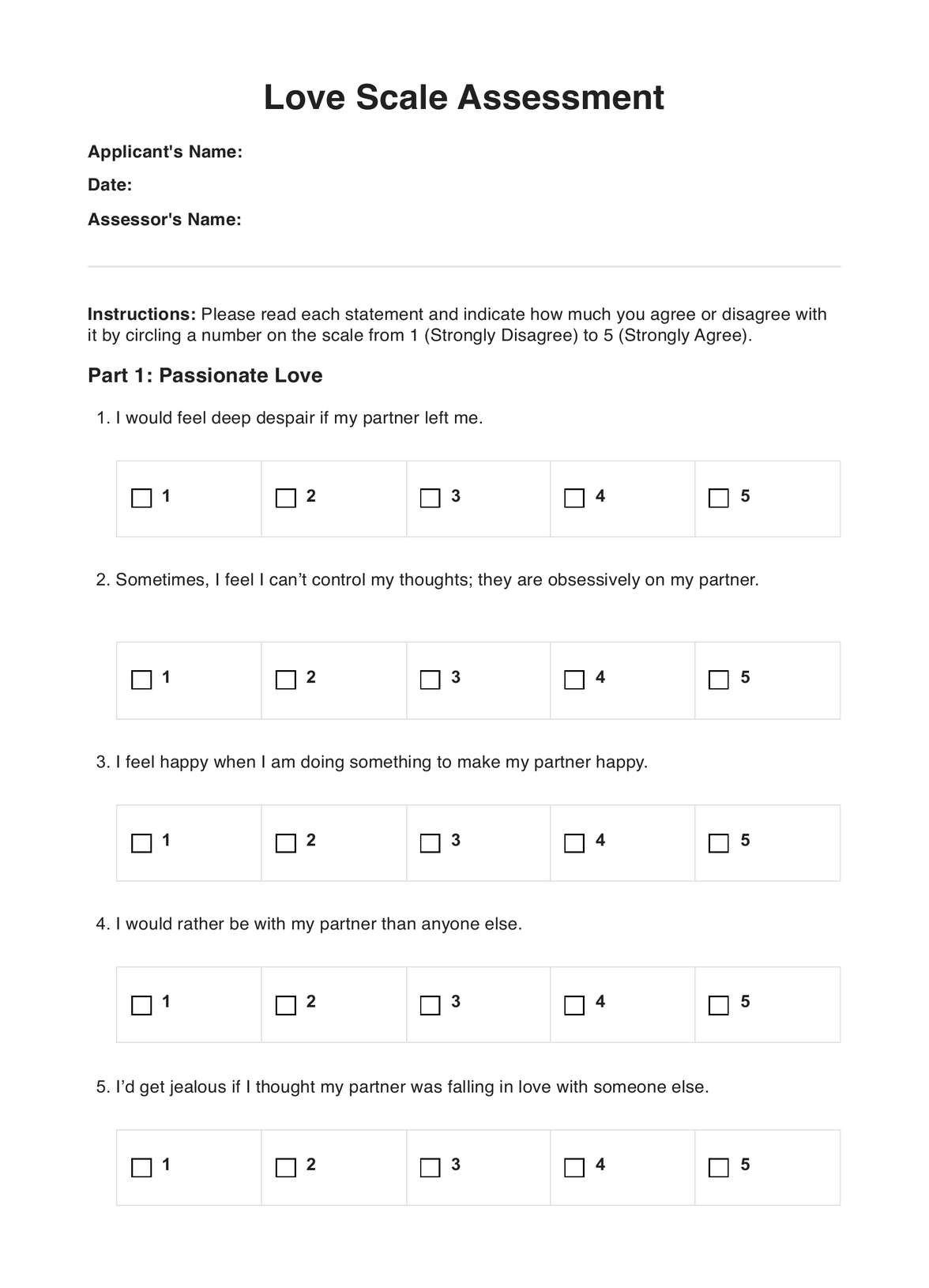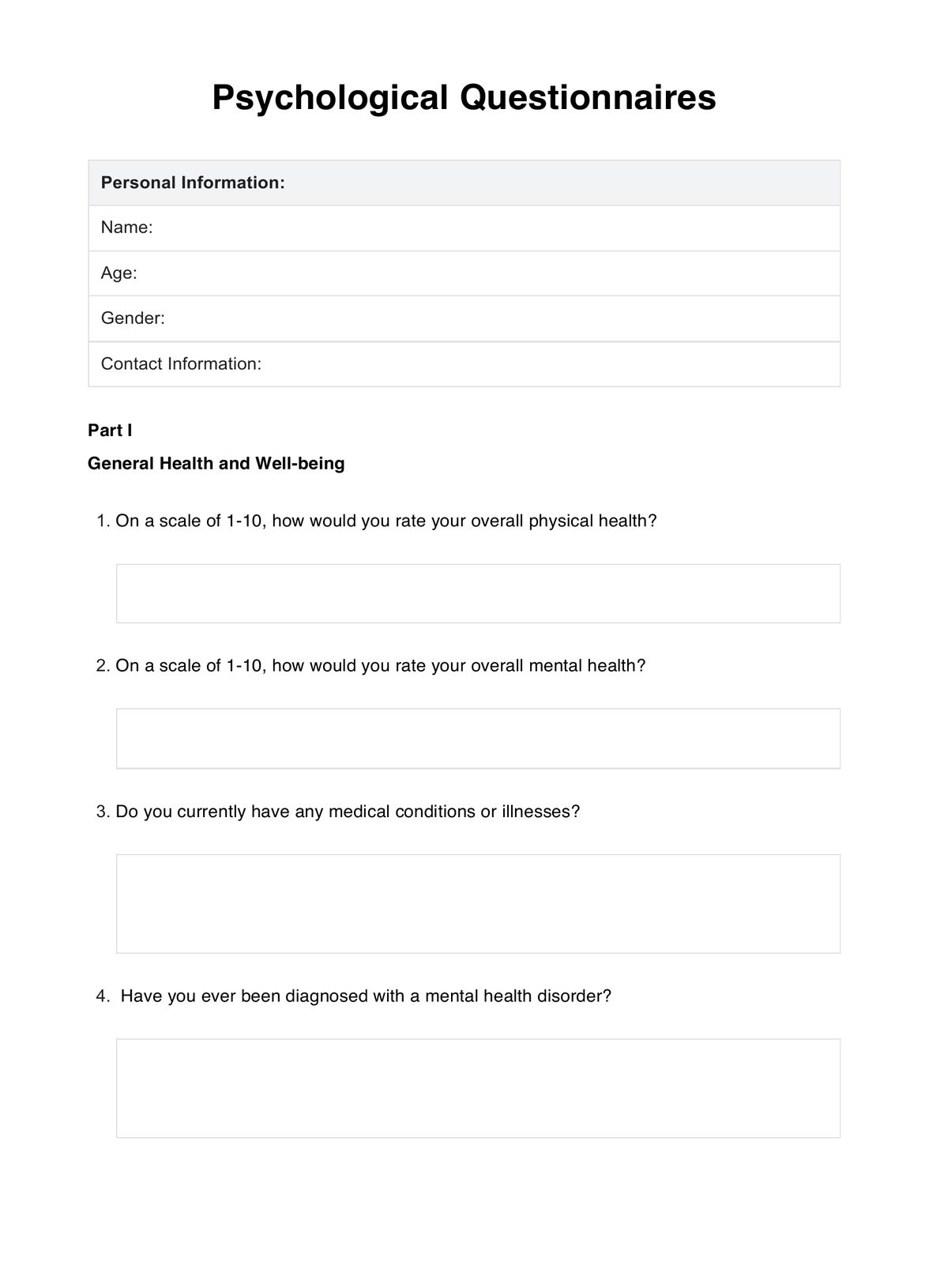Coping with Feelings to Avoid Relapse CBT Worksheet
Discover the benefits of the Coping with Feelings to Avoid Relapse CBT Worksheet. Enhance self-awareness, develop coping skills, and prevent relapse effectively.
�?�


What is Cognitive Behavioral Therapy?
Cognitive Behavioral Therapy (CBT) is an established, effective, and versatile therapeutic approach extensively used to address various psychological issues. CBT is a psychological treatment that has been proven effective for various problems. It's a structured, goal-oriented talk therapy.
CBT is based on the understanding that our thoughts, feelings, and behaviors are interconnected. Negative or unhelpful thought and behavior patterns can lead to emotional distress or contribute to life difficulties. CBT aims to assist individuals in recognizing these patterns and developing more adaptive, healthier coping strategies.
In the context of substance abuse, CBT plays a pivotal role. It involves working closely with a mental health counselor to identify thought patterns that lead to self-destructive actions, such as substance abuse. The therapy helps individuals understand their triggers, learn to cope without resorting to substance use and create healthier thought patterns.
Moreover, has proven particularly effective in treating co-occurring disorders, such as depression or anxiety, which often accompany substance abuse. By addressing these underlying issues, CBT can significantly enhance the recovery process and reduce the likelihood of relapse. This makes it an invaluable tool in comprehensive treatment programs for substance abuse.
Coping with Feelings to Avoid Relapse CBT Worksheet Template
Coping with Feelings to Avoid Relapse CBT Worksheet Example
How to use the Coping with Feelings to Avoid Relapse CBT Worksheet:
The Coping with Feelings to Avoid Relapse CBT Worksheet is a practical guide to help individuals navigate their emotional landscape and develop effective strategies to prevent relapse. Here's a step-by-step guide on how to utilize this worksheet effectively:
Step 1: Identify Triggers
The first step in using the Coping with Feelings to Avoid Relapse CBT Worksheet involves identifying triggers. Triggers can be situations, people, or emotions that may provoke an urge to return to substance use. By recognizing these triggers, individuals can prepare themselves for when they encounter these scenarios or feelings in real life.
Step 2: Develop Coping Strategies
Once the triggers have been identified, the next step is to create robust coping strategies. These techniques or actions can be used to manage the strong emotions or stressful circumstances that might lead to a relapse. The aim is to develop strategies that provide an alternative to substance use, thus promoting healthier responses.
Step 3: Practice and Implement
The final step in utilizing the Coping with Feelings to Avoid Relapse CBT Worksheet is regularly practicing and implementing these coping strategies when faced with potential triggers. This step is crucial as it helps to embed these new coping mechanisms into daily life. Regular practice also enhances confidence in managing triggers, fostering a sense of control and resilience in facing challenges.
Our printable Coping with Feelings to Avoid Relapse CBT Worksheet is more than just a tool; it's a roadmap to recovery. It facilitates self-awareness, encourages the development of healthier coping mechanisms, and ultimately guides individuals toward a substance-free life.
When would you use this Coping with Feelings to Avoid Relapse CBT Worksheet?
The Coping with Feelings to Avoid Relapse CBT Worksheet is a crucial tool designed to be used primarily during the recovery process from substance abuse. However, its application can extend beyond this phase, proving beneficial at various stages of one's journey towards a healthier lifestyle.
At the outset of recovery, this worksheet can assist individuals in identifying their emotional triggers and understanding the role these emotions play in their substance use patterns. It helps set the foundation for self-awareness, a key component in preventing relapse.
As the recovery progresses, individuals can continue using the Coping with Feelings to Avoid Relapse CBT Worksheet as a touchstone for exploring new or recurring emotional triggers. It serves as a platform for continuous learning and adaptation, allowing users to develop and refine coping strategies as they navigate different life situations and challenges.
Healthcare professionals, such as therapists, counselors, and psychologists, can effectively employ this worksheet. It can be used as a structured guide in therapy sessions to facilitate meaningful conversations about emotions, triggers, and coping strategies. The insights gained from these discussions can inform personalized treatment plans to foster resilience and prevent relapse.
The Coping with Feelings to Avoid Relapse CBT Worksheet is an invaluable tool that can be used at various stages of the recovery process. Its versatility makes it a beneficial resource for individuals on their recovery journey and healthcare professionals aiming to support their patients effectively.
What are the benefits of using this Coping with Feelings to Avoid Relapse CBT Worksheet?
The Coping with Feelings to Avoid Relapse CBT Worksheet is a powerful tool offering manifold benefits in recovering from substance abuse. Here are some key advantages of utilizing this free resource:
Enhanced Self-Awareness
The worksheet encourages individuals to delve deep into their emotions and identify potential triggers for substance use. This enhanced understanding of one's emotional landscape can lead to more informed decisions and healthier responses.
Development of Effective Coping Skills
The worksheet also aids in the development of effective coping strategies. These are essential tools that can help individuals navigate challenging situations or strong emotions without resorting to substance use. Regularly practicing these strategies can significantly improve resilience and emotional regulation.
Prevention of Relapse
The ultimate goal of the Coping with Feelings to Avoid Relapse CBT Worksheet is to prevent relapse. Helping individuals understand their triggers and develop effective coping skills can significantly reduce the chance of relapse. According to research by Marlatt and George (1994), relapse prevention strategies, such as those promoted by this worksheet, are effective in maintaining long-term abstinence from substance use.
Our free Coping with Feelings to Avoid Relapse CBT Worksheet is an invaluable tool that fosters self-awareness, enhances coping skills, and aids in relapse prevention, serving as a reliable ally in the challenging journey towards recovery.
Commonly asked questions
The time can vary depending on the individual, but it might take a few sessions to complete the worksheet thoroughly.
�?�
This worksheet helps individuals identify triggers, develop coping strategies, and prevent relapses.
Anyone in recovery from substance abuse can use this worksheet, preferably under the guidance of a healthcare professional.

.jpg)
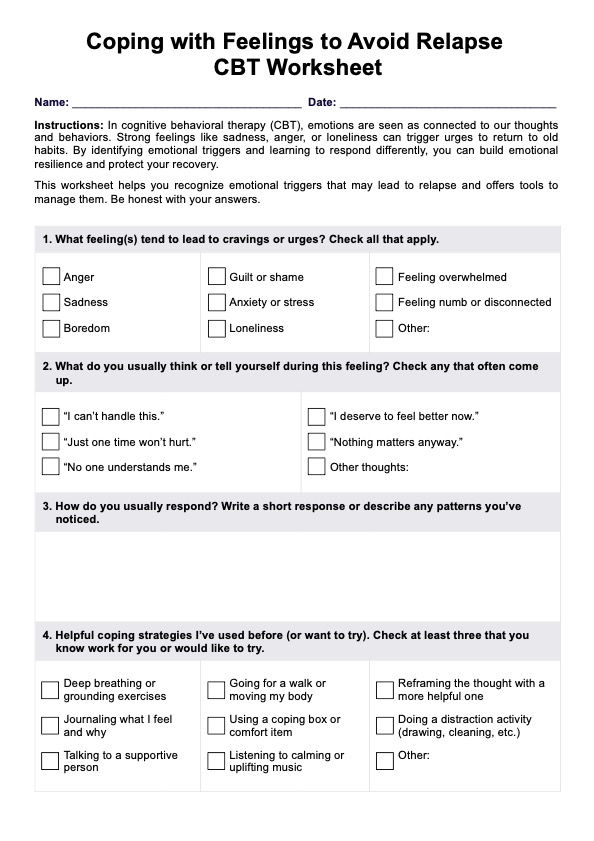
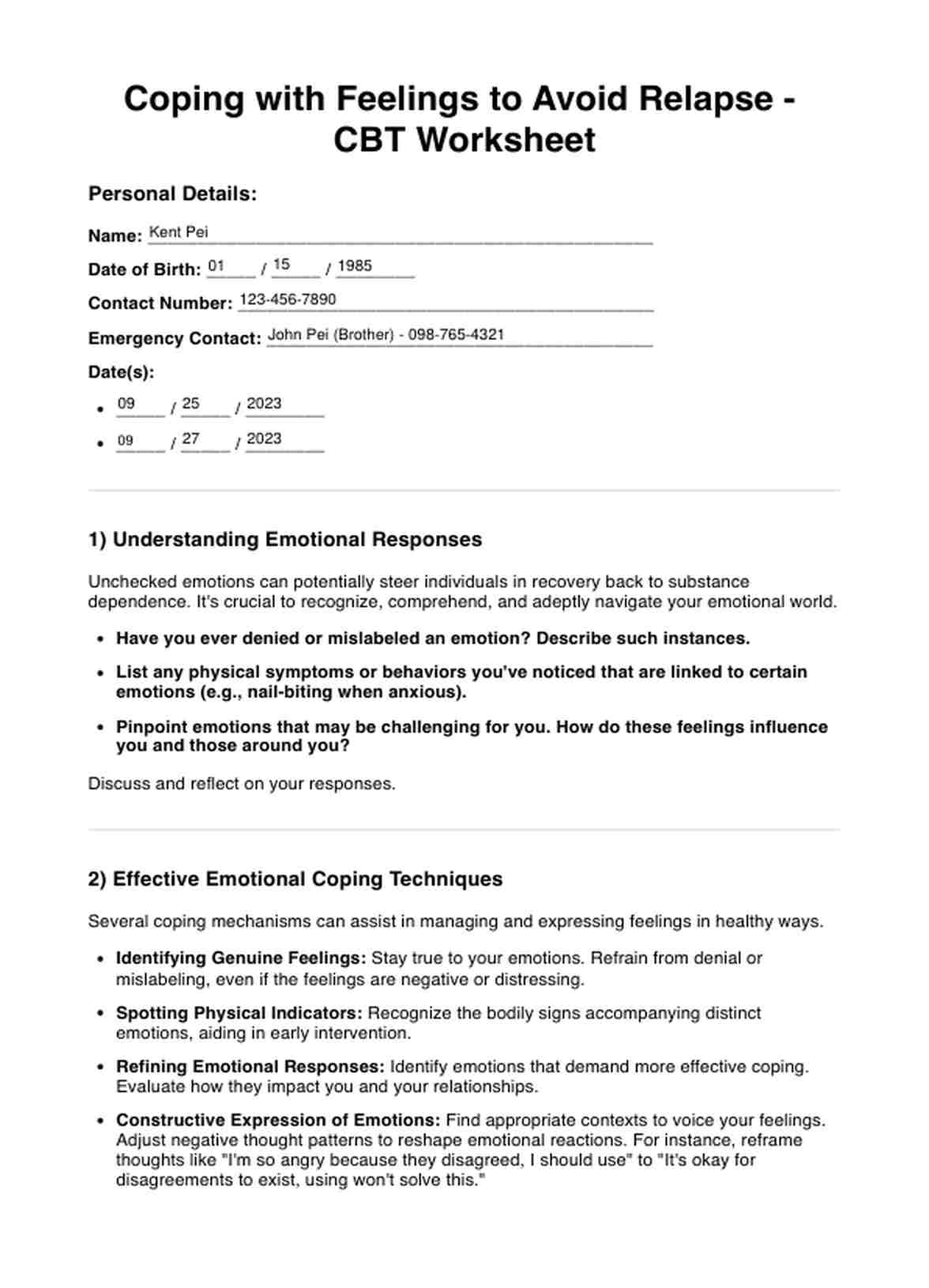














-template.jpg)


